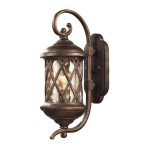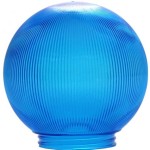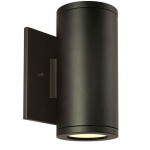Can You Spray Paint Outdoor Chairs?
Spray painting offers a convenient and effective method for revitalizing outdoor chairs. It allows for even coats and can reach intricate details, making it a popular choice for DIY projects. However, achieving a durable and aesthetically pleasing finish requires careful consideration of various factors, including chair material, paint type, and proper surface preparation.
Different chair materials react differently to spray paint. Metal chairs, whether wrought iron, aluminum, or steel, generally accept spray paint well. Plastic chairs, though paintable, require specific plastic-adhesion spray paint to ensure proper bonding and prevent peeling. Wicker, a natural material, requires specialized flexible paints to accommodate its woven structure and prevent cracking. Wooden chairs present a good surface for spray painting, but proper preparation is crucial for optimal adhesion and a smooth finish.
Selecting the appropriate spray paint is paramount for a successful project. For outdoor furniture, a paint specifically designed for exterior use is essential. These paints typically offer superior resistance to UV rays, moisture, and temperature fluctuations, ensuring the color remains vibrant and the finish stays intact despite exposure to the elements. Look for keywords like "exterior," "weather-resistant," or "UV-protected" on the spray paint can.
Within exterior paints, several types cater to different materials and desired finishes. Oil-based paints offer excellent durability and a smooth finish, though they require longer drying times. Latex-based paints are popular for their quick drying and easy cleanup. Specialty paints cater to specific materials like plastic or wicker. Consider the material of the chair and desired finish when choosing the paint type.
Proper surface preparation is critical for achieving a professional-looking and long-lasting finish. This process typically involves cleaning, sanding, and priming. Cleaning the chair removes dirt, grime, and any loose debris that could interfere with paint adhesion. A thorough cleaning with soap and water, followed by rinsing and complete drying, is typically sufficient.
Sanding the chair's surface creates a slightly rough texture, promoting better adhesion of the primer and paint. For metal chairs, use sandpaper or a wire brush to remove rust and any existing loose paint. Plastic chairs may benefit from light sanding with fine-grit sandpaper to improve paint adhesion. Wooden chairs often require sanding to smooth out imperfections and create a uniform surface.
Priming the chair creates a base layer that further enhances paint adhesion and provides a uniform surface for the paint to adhere to. Select a primer specifically designed for the chair's material and compatible with the chosen paint. Apply a thin, even coat of primer and allow it to dry completely before applying the paint.
When applying the spray paint, several techniques contribute to a smooth and even finish. Hold the can approximately 10-12 inches away from the chair's surface and apply thin, even coats, allowing each coat to dry completely before applying the next. Avoid spraying thick coats, which can lead to drips and runs. Multiple thin coats provide better coverage and durability than one thick coat.
The environment plays a significant role in successful spray painting. Choose a well-ventilated area, preferably outdoors, to avoid inhaling fumes. Avoid painting in direct sunlight or on excessively hot or humid days, as these conditions can affect the drying process and the final finish. A calm day with minimal wind is ideal for preventing debris from sticking to the wet paint.
Protecting the surrounding area is vital when spray painting. Cover nearby surfaces with drop cloths or newspapers to prevent overspray. Consider wearing a mask and gloves to protect yourself from paint fumes and contact with the paint. Disposing of used spray paint cans responsibly according to local regulations is essential.
Maintaining the newly painted chairs prolongs the life of the finish. Regular cleaning with mild soap and water removes dirt and grime. Avoid using abrasive cleaners or scrubbing pads, which can damage the paint. Touch up any chips or scratches promptly to prevent further damage and maintain the chair's appearance. Storing the chairs indoors during harsh weather conditions or covering them with protective covers can further extend their lifespan.
Following these guidelines, one can successfully revitalize outdoor chairs with spray paint, achieving a durable and visually appealing finish that enhances the outdoor living space.

How To Paint Metal Patio Furniture With Spray Joyful Derivatives

Spray Paint Mesh Metal Outdoor Patio Furniture Petticoat Junktion

How To Paint Metal Patio Furniture So It Looks Like A Million Bucks

Spray Paint Mesh Metal Outdoor Patio Furniture Petticoat Junktion

How To Paint Outdoor Furniture With Sling Seats Inmyownstyle

How To Spray Paint Metal Outdoor Furniture Last A Long Time H2obungalow

How To Paint Metal Patio Furniture

How To Spray Paint Metal Outdoor Furniture Last A Long Time H2obungalow

How To Paint Metal Patio Furniture

How To Paint Metal Patio Furniture So It Looks Like A Million Bucks
Related Posts







